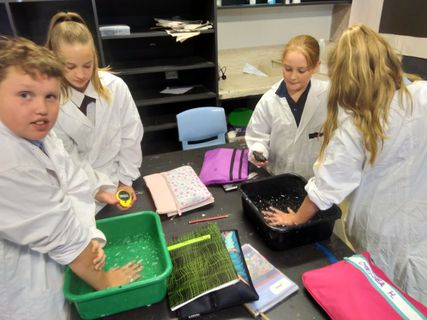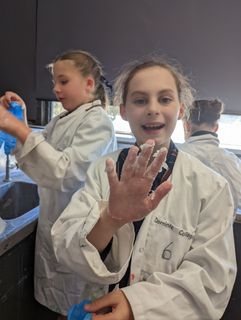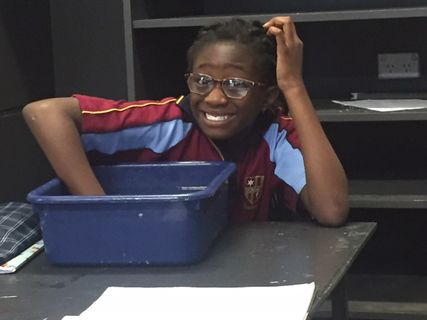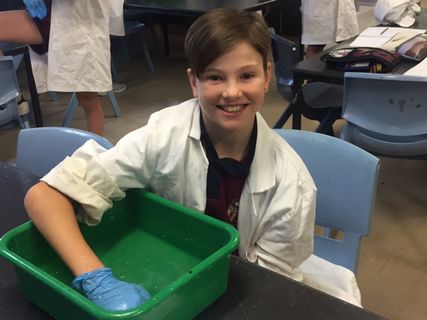Science in Year 5
In Year 5, we have been studying adaptations in animals and
plants in Science.
We have explored the different kinds of adaptations – structural,
behavioural, and physiological. Students have investigated
ways that animals and plants adapt to survive in their natural
environments.
We visited Animal Husbandry to look at ways that our
school animals have adapted to their environment. Over time, the
animals are able to survive and thrive. We investigated the hypothesis
that a layer of blubber helps insulate an animal so that it can survive
in colder waters for longer. Did you know that whales have a layer of
blubber that measures 30 centimetres? This enables them to withstand
extremely cold temperatures.
In our experiments, we were able to support this hypothesis as we
tested a hand in cold water to a timer. We covered our gloved hands
in copha to simulate the blubber. We found that our hypothesis was
supported. The copha did insulate our hands in the gloves.
Mrs Barbara Moulton, Mr Ben Crick and Mr Daniel Bellinger - Year 5 Teachers
 A Catholic School in the Salesian Tradition
A Catholic School in the Salesian Tradition



